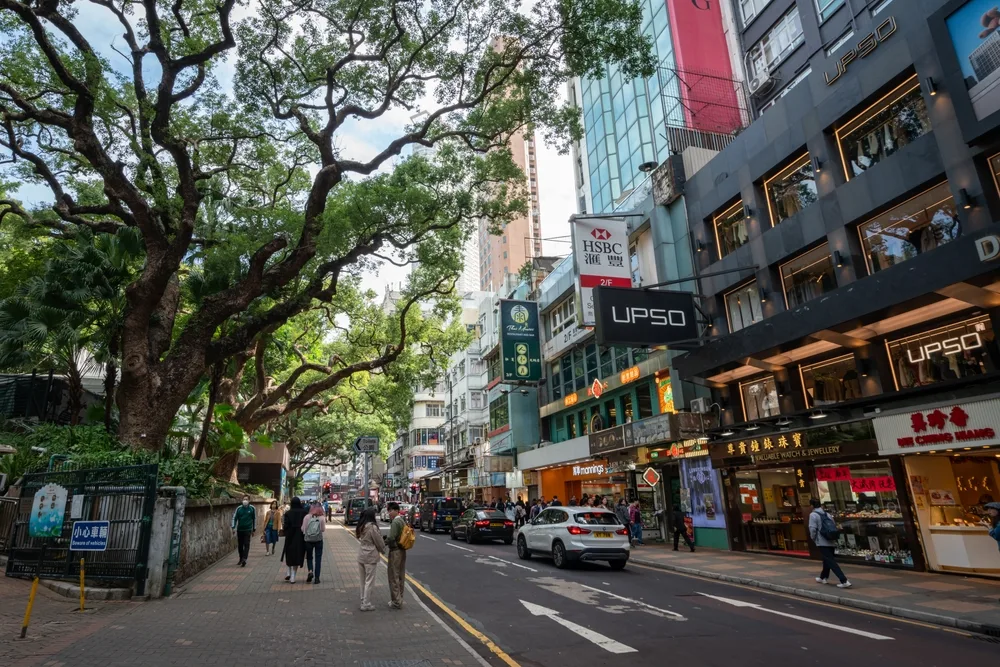What's the best time to visit Asia?
The best time to visit Southeast Asia, including Thailand and Vietnam, is from November to February, offering cool and dry weather. For South Asia, like India and Sri Lanka, October to March is ideal with milder temperatures and less humidity.
East Asia, including Japan and China, is best in spring and autumn for cherry blossoms and colorful foliage, while Central and Southeast Asian countries like Indonesia are preferable in the dry season from May to September.
Home to majestic architecture, rich culture, scenic landscapes, and laid-back locals, Asia is a continent that satisfies all criteria for a top-notch holiday destination.
From dynamic Bangkok and expensive Singapore to chill islands and a digital nomad lifestyle in Bali, no matter the location you settle on, your Asian vacation can be anything you want it to be. But is there such a thing as the best time to visit Asia, or can you simply go when you feel like it?
Join us as we explore this and other exciting Asia-related queries in our detailed travel guide — we share information you simply can’t find anywhere else, so make sure you stick to the very end. Ready to start? So are we — let’s dive in!
The Overall Best Time to Visit Asia

Phattana Stock/Shutterstock
The best time to visit Asia varies depending on the specific region you plan to explore due to the continent’s vast size and diverse climates.
In Southeast Asia, which includes countries like Thailand, Vietnam, Cambodia, and Laos, the prime time to visit is usually from November to February. During these months, the weather is pleasantly dry and cool, with temperatures ranging from 75°F to 90°F (24°C to 32°C).
This makes it an excellent period for exploring ancient temples, enjoying pristine beaches, and partaking in outdoor adventures with comfortable weather and lower humidity.
Heading to South Asia, encompassing countries like India and Sri Lanka, the best time to visit is from October to March.
This period offers cooler and drier conditions, with temperatures between 68°F and 86°F (20°C to 30°C). It’s an ideal time to explore historical sites, experience vibrant cultural festivals, and traverse diverse landscapes.
In East Asia, which includes Japan, South Korea, and China, the best times to visit are spring (March to May) and autumn (September to November).
These seasons provide pleasant temperatures, with cherry blossoms gracing the landscapes in spring and colorful foliage adorning the scenery in autumn. You can witness the stunning cherry blossoms, hike scenic trails, and immerse yourself in local traditions.
Central Asia, comprising countries like Kazakhstan, Uzbekistan, and Kyrgyzstan, is best explored during spring and early autumn.
During these times, the weather is mild, and rainfall is minimal. Be sure to delve into the rich history of the Silk Road, discover ancient cities, and trek in pristine mountain landscapes.
Lastly, in Southeast Asia, which includes Indonesia, Malaysia, and the Philippines, the best time to visit is typically during the dry season from May to September. During this period, the weather is warm, and rainfall is minimal.
You can relax on tropical beaches, explore lush jungles, and immerse yourself in the diverse cultures of the region.
Cheapest Time to Visit Asia

Hong Kong – December 2, 2023: Hong Kong cityscape view/Itsara Nulor/Shutterstock
The absolute cheapest month to head to Asia is in December. Budget-conscious visitors should look for airfare deals and attractive accommodation options around this time and plan their itinerary in a way that matches their estimated expenses.
That said, how cheap your Asia itinerary can get largely depends on which Asian country you head to and not when you visit.
For instance, going to Singapore or Hong Kong can never be done with the same budget as the one needed for Thailand or Myanmar.
Also, note that December marks the beginning of Asia’s monsoon season (for some countries at least), which explains why this would be the cheapest month to visit — not many are willing to deal with Asia’s spontaneous rainfall.
Yet, for travelers who believe that every penny counts, the rain is never perceived as a hindrance. Finally, if you wish to avoid high prices, don’t plan your visit around major holidays or festivals, as that’s when prices skyrocket.
Least Busy Time to Visit Asia

Lena Serditova/Shutterstock
Discussing the least busy time to visit Asia is somewhat challenging, just like with the cheapest time — many factors are at play, but for the sake of helping you as much as we can, we can conclude that Asia, on the whole, is the least busy in September.
This has to do with kids going back to school, so summer holidays come to a halt, and family vacations end. Also, it’s the time when rainfall is not as common on the whole, and winter has yet to make an appearance.
Thanks to this “confusing” weather situation, many opt to ignore heading to Asia at this time, but if you choose the right countries, September can quickly become one of your favorite months to travel to Asia.
Our recommendations include Hong Kong, Nepal, Bali, and Singapore. Specific cities worth being on your September list are Kuala Lumpur, Seoul, Goa, and Beijing.
Worst Time to Visit Asia

Iryna Horbachova/Shutterstock
The worst time to visit Asia is during the monsoon season, which runs each year in different months depending on the country you’re heading to.
For instance, if you’re going to Singapore, Indonesia, or Malaysia, avoid the December–March period. Those heading to Japan and Korea can also expect harsh winds at this time.
But if you wish to visit The Maldives, note that water activities are running at full steam, as this is the Maldives’ peak tourist season. For countries such as Laos, Vietnam, Myanmar, Cambodia, and the Philippines, the rainy season begins sometime in June and runs through October.
Even if you end up visiting these countries at their rainiest, know there’s still a lot you stand to gain. From the Chinese New Year and Christmas in the Phillippines to the Marina Bay festivities in Singapore, the monsoon season doesn’t mean you’ll be bored.
On the contrary, you get to attend many celebrations, and chances are you’ll forget the rain altogether.
While the monsoon season definitely has its challenges, it might very well be suitable for travelers who have no problem being flexible with their travel schedule and embrace all the itinerary changes that may come with it.
Finally, keep in mind that everything we shared so far is based on estimates about Asia on the whole.
If you have a specific country in mind, make sure to do further research (start here) and learn when the best times to visit, how to avoid crowds, whether traveling on a budget is possible, and so on. Given the continent’s absolute vastness, it’s very hard to come to a definite conclusion about it on the whole.
Things to Consider

DavideAngelini/Shutterstock
When embarking on your Asian adventure, there are some things worth keeping in mind to ensure a comfortable stay — here’s what you need to consider:
- Pack suitable clothes for temple visits — make sure your shoulders and knees are covered.
- While credit/debit cards such as MasterCard and Visa are widely accepted in most locations, make sure you always have money with you for street vendors, smaller restaurants, taxi rides, or if you’re going to more rural regions.
- Get acquainted with local culture, laws, and customs before your visit to avoid unpleasant situations. For instance, in certain Asian countries, it’s rude to touch a person’s head, as the head is considered to be highly sacred. Also, some countries, such as Thailand, require visitors to take off their shoes before they enter a home, a small shop, or a temple.
- It’s common for foreigners to experience stomach aches during their stay. While most of these unfortunate situations aren’t that concerning, it’s advisable to pack some medication to make sure your stay goes with fewer disruptions. Also, if you’re planning on eating street food, head where it’s busy to make sure the food is fresh and local-approved. Avoiding undercooked food is highly recommended as well.
- Bring insect repellent and, whenever possible, wear long-sleeved clothes to avoid getting bitten. Don’t forget feminine hygiene products, too, as they can be quite pricey even if you do find them.
- Don’t underestimate the Asian sun — stock up on that SPF before your departure.
- Check electrical socket requirements — for instance, Central Asia uses 220V at 50 cycles.
- Safety varies from one country to another — for instance, road crossing is somewhat problematic in China, as most motorists pay little (to no) attention to pedestrians. In Laos, Cambodia, and central Vietnam, unexploded landmines still exist, so limit your wandering adventures — trekking in isolated areas isn’t advisable.
- Getting travel insurance before your Asian journey is highly advisable. Also, note that the medical service you could potentially receive varies significantly from one region to another.
So, What’s the Best Time to Visit Asia?
| 👍 Best Time to Visit | April to July |
| 💲 Cheapest Time to Visit | December |
| 🗓️ Least Busy Time to Visit | September |
| 👎 Worst Time to Visit | Varies by Country |
As you can see, Asia has something for every type of visitor, irrespective of when one may decide to head there. Simply choose the Asian destination you’ve been eyeing for a while, and enjoy exploring this continent full of wonders!
Last but not least, if you need advice on picking a particular country, here are our suggestions:
- Are the Maldives Safe to Visit in 2025? | Safety Concerns
- Is Malaysia Safe to Visit in 2025? | Safety Concerns
- Where to Stay in Fiji in 2025 | Best Areas & Hotels
- The Best & Worst Times to Visit Bangladesh in 2025
- The 15 Best Places to Visit in Thailand in 2025
So, where are you heading first? Looking forward to hearing which country you’ve chosen!



